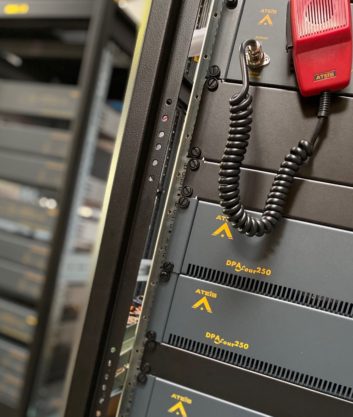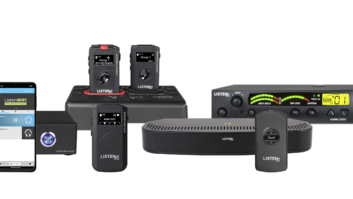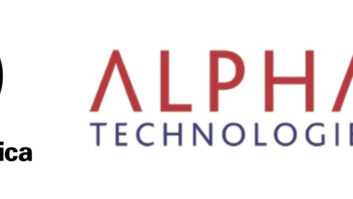The human mind likes to identify things and put them in categories. Often this can mean lumping two or more subjects together under an easily identifiable heading, even if they do not necessarily belong together. This true for the term PA/VA, which is a nice, neat bundling together of two technologies that share some common principles but which perform very different functions.
 The disparity between them has become more obvious now that PA (public address) has shifted from its 100V line, column/horn loudspeaker roots (although modern versions of those technologies continue to be used widely) and adopted elements of pro audio. In some installations – such as major footballs stadiums – the PA is not just a means to make announcements about the teams or where the pie stand is, it can blast out music at gig level through cabinets that would not be out of place on a rock tour.
The disparity between them has become more obvious now that PA (public address) has shifted from its 100V line, column/horn loudspeaker roots (although modern versions of those technologies continue to be used widely) and adopted elements of pro audio. In some installations – such as major footballs stadiums – the PA is not just a means to make announcements about the teams or where the pie stand is, it can blast out music at gig level through cabinets that would not be out of place on a rock tour.
By contrast VA (voice alarm) has not received such widespread acceptance or understanding. This is partly because the hope is that such systems are never used, being that their primary function is to direct and reassure people during an evacuation or emergency. Although there is a legal imperative to install VA systems in many public buildings or areas – which varies from country to country across Europe – the scale and sophistication of the installation is more likely to be dictated by money and the willingness to spend it.
“The market sees VA as a grudge purchase, something they have to have,” acknowledges Peter Alberry-King, general manager (technical) at Penton UK. “Commercial PA is slightly different. A lot of schools in the UK are installing lockdown systems, which is partly in response to a government refurbishment directive. We will see more projects in the future but it is a slightly different view. VA is primarily used in emergency systems [but] a lockdown can be looked at as an emergency.”
Product standards and application guidelines for VA were set out in two additions to the European EN 54 standard for fire detection and fire alarm systems. Both published in 2008, Part 16 covers ‘voice alarm control and indicating equipment’, while Part 24 deals with ‘component of voice alarm systems – loudspeakers’. VA technology began to emerge in the early 1990s as an alternative to traditional bell fire alarms and sounders but there is frustration in the business that, despite much promotion and enthusiasm back then, not much has changed in 30 years.
SELF CERTIFIED
“There is still a lot of ignorance about VA,” comments Alberry-King. “In the UK projects are self-certificated by the contractor but we continue to see situations where people want to spend as little as possible on such a system.” In an effort to tackle this persisting attitude and lack of understanding, industry trade body the ISCVE (Institute of Sound, Communications and Visual Engineers) has drawn up a Manifesto for UK Voice Alarms.
Published in May this year, the document summaries the situation by stating: “VA is under-utilised and under-regulated in the UK compared to many other countries.” It lays out the areas where voice evacuation systems should be installed, covering both public and residential premises. These include: retail, commercial or exhibition buildings (single-storey with an area of over 3000m2 or multi-storey with an area exceeding 1500m2); high-rise office buildings of six stories or more or designed for occupancy by more than 500 people; entertainment and sports facilities with more than 1500 seats; cinemas and theatres with more than 600 seats; hospitals and health facilities with more than 200 beds in the building; high-rise public buildings of six storeys or more; high-rise collective residential buildings and hotels with more than 200 beds or with six storeys or more; metro and underground rail stations; stations and ports, intended to hold more than 500 people or Department for Transport classified grades A-C; airports, intended to hold more than 500 people.
The most important demands made by the Manifesto are that VA systems should be mandatory for any building of six or more floors that has public occupancy and any building where 100 or more visitors unfamiliar with the evacuation policy of the building may congregate. Industry veteran and lobbying chairman for ISCVE Neil Voce worked on the Manifesto and says the UK is “very far from the top of the pile” in terms of VA. “Other countries have mandatory approaches because it is an important installation,” he adds.
This view is echoed by Antonio Ferrari, director of the engineering support group at Italian manufacturer RCF. He does, however, observe that while standardisation has helped the growth of VA, there has been greater opportunity for contractors and end-users to squeeze the bottom line. “It is growing, being a standards-driven market thanks to more and more updated national regulations in European countries that specify EN 54 certified equipment in buildings attended by several people,” he says. “On the other side, the certifications have flattened VA business where now the piece of paper (certification) and the lowest price make the purchasing decision, mainly in mid to small installations where the budget is paramount.”
BASIC ADVANTAGES
The advantages of VA over a basic, non-voice alarm is highlighted by Henry Rawlins, application manager of ASL (Application Solutions Limited): “In an emergency, VA is more than just a simple evacuation system, it is designed to safely manage people in all manner of situations. In a typical application this is evident through the management and control of a phased evacuation. Alternatively, during a terrorist incident this might mean keeping people safely within a building.”
ASL produces a range of equipment for VA and PA applications, including IP-based routers, amplifiers and interfaces, plus the iVENCS control system and loudspeakers. A consideration in all this has been the audio quality of both PA and VA. Rawlins comments that there was always the view VA sounded poor because it operated in the speech band. “But it can sound great,” he says. “It depends on the acoustic but in a stadium you can have a hybrid system [for PA and VA] with a fully monitored system driving cabinets. This saves money because you don’t need separate systems or loudspeakers, with the added benefit of reliability.”
Being reliable, with full redundancy, is at the heart of VA. It is also part of the technology’s irony; as Rawlins points out, the hope is that the system is never used for an emergency but it has to be ready to go. He says it is now being used more for day-to-day messaging, particularly at big rail terminals, such as St Pancras International, and airports, where the concourse has expanded to encompass large retail areas.
ASL is producing integrated commercial PA and EN 54-compliant VA systems, featuring Audinate Dante audio over IP (AoIP) capability. The Dante component allows the audio to run on an IT backbone, enabling full networking, while the voice safety side is still independent and fully backed up.
TECH ADVANCES
The technological advances of IP in-management have, in the view of Ian Bridgewater, director and technical sales manager at TOA Corporation UK, been crucial in improving one key aspect of system operation. “They have made huge changes to the way VA/PA installation and maintenance engineers are able to communicate remotely,” he says.
“Being able to connect via industrial standard network protocols has allowed manufacturers to work in collaboration with software developers to combine products and technology to give greater flexibility in remote system management. It also allows for integration with VMS [Video Management Systems] and other network audio communication system integrations supported by both ONVIF [Open Network Video Interface Forum] and SIP [Session Initiation Protocol].”
The greater integration of technologies, facilitated in particular by IP, has not only brought together PA and VA but also the developers and producers of new products and systems, something that Bridgewater sees as only increasing. “The collaboration is between manufacturers of VA/PA systems and companies that are developing specific software that enables remote access from a PC, giving engineers and system maintenance companies the ability to interrogate the installed system and make changes without having to be onsite,” he says.
Bridgewater adds that the Covid pandemic and the need for announcements about social distancing and other health safety requirements in public places will lead to a reassessment of what public audio systems do and how they do it. “We have to re-think the messaging side of VA/PA to ensure systems are delivering the important information that venues need to get across but, because of the increase in frequency, [they have to] make certain the messages do not get diluted or impinge on the consumer experience. Spaces that thought they didn’t require PA in the past now have an obligation to provide public messaging and that will lead to designing systems for new applications such as meeting rooms to allow for keeping to social distancing protocols.”
CLOUD ROLES
PA messaging has become another area of life and business where the cloud is now playing a major role. Among the companies supplying cloud-based PA systems that integrate with SIP phones is Manchester integrator AQORD. As well as providing and installing PA systems, the company works in VA, background/foreground music and is the UK reseller for music service provider Soundtrack Your Brand (see April-May 2021 issue).
Commercial director Andrew Kenyon says that cloud-based messaging will play a valuable role in enabling businesses to provide Covid information (as well as more general announcements) but not let that get in the way of people’s work. “Store managers don’t want to be occupied with going to the mic and making announcements, they want to concentrate on running the shop,” he explains. “People are utilising their PA a bit more and if it’s done right, it doesn’t have to be a horrible experience.”
Peter Alberry-King at Penton agrees that Covid has “opened up more flexibility for pre-recorded messages”, plus associated technologies such as text-to-speech. Penton is also going down the AoIP route but instead of Dante or any other commercial system, it uses its own point-to-point/peer-to-peer network based on Layer 3 switching. “Each box [on the network] has an IP address and we are able to set up and configure what it does,” Alberry-King explains. “For example, it could have a background music input, which converts into a network audio channel.”
Such technology is making both PA and VA far more flexible and adaptable, which are likely to make them more attractive and relatable to architects, construction companies, and building operators. But the importance of both technologies and the crucial roles they play – VA in particular – should not be forgotten or overlooked.







